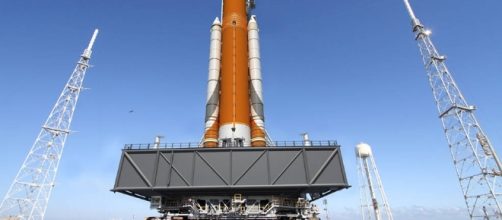One of the salutary effects if competition is that the entities involved try to cost costs to make their products more appealing. Something of the sort has developed in the next generation of heavy lift space rockets. With reusable commercial launch systems such as New Glenn and Falcon Heavy drawing night, managers if the space launch system has moved to try to cut the cost of building and operating its rocket. Approaches include using 3D printing, automation streamlining supply chains, and even making more of the SLS reusable. The goal is to reduce the cost of building and to launch an SLS to $500 million a flight from the current $1 billion.
Besides competition, aerospace companies are anticipating flat budgets for NASA for the next few years. With a finite share of the government pie to divide up, cutting costs becomes even more of an imperative.
Even so, flying the Falcon Heavy and the New Glenn is likely to cost less than the Space Launch System because the commercial rockets will be more reusable and the SLS will largely not be. The main selling point for the Space Launch System is that it can throw more payload into space, 130 tons in its final form, as opposed to half or a third of that amount for its commercial rivals. The advantage means fewer launches to get people to Mars or build up a lunar base. The outer solar system would be opened up to robotic exploration, with the SLS tossing massive probes to Jupiter or Saturn in half the current time directly with no need of gravity assist maneuvers.
The extra money may be worth the reduced risk that implies.
How frequently both the Space Launch System and its commercial rivals are used will depend on Trump’s space policy. An early push for a return to the moon would mean that all three of these rockets will see lots of use. Blue Origin’s Jeff Bezos is already vowing to build a lunar lander called Blue Moon if NASA is willing to put up part of the cost. A number of other companies such as Moon Express and Astrobotic have their moon landers in development that could deliver robots and cargo to the lunar surface to start a moon base going in advance of astronauts.
The key is putting these rockets to work, increasing flight frequency, and giving engineers and flight controllers the experience they need to iron out any issues and keep up a decent launch tempo. The sooner the Trump administration can roll out its plans for exploring deep space the better.

